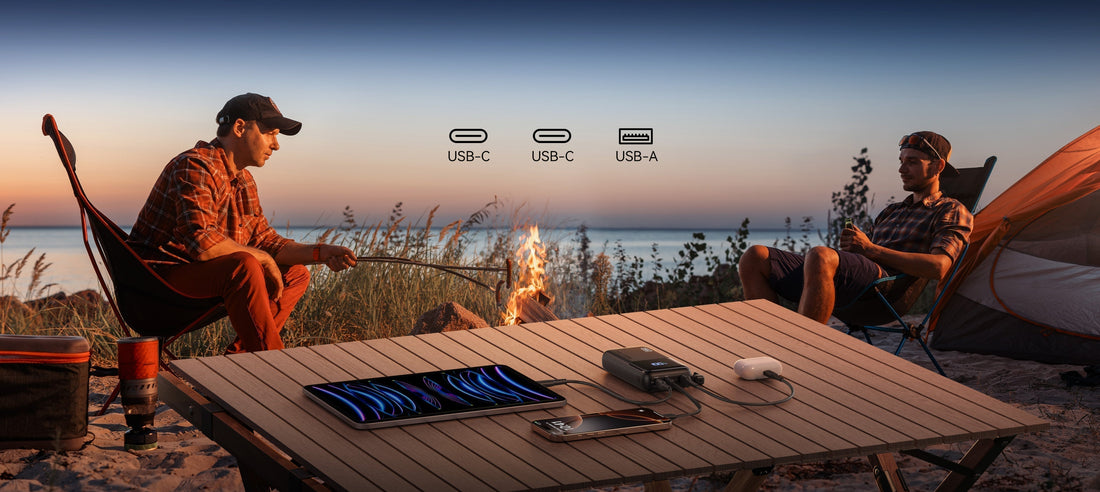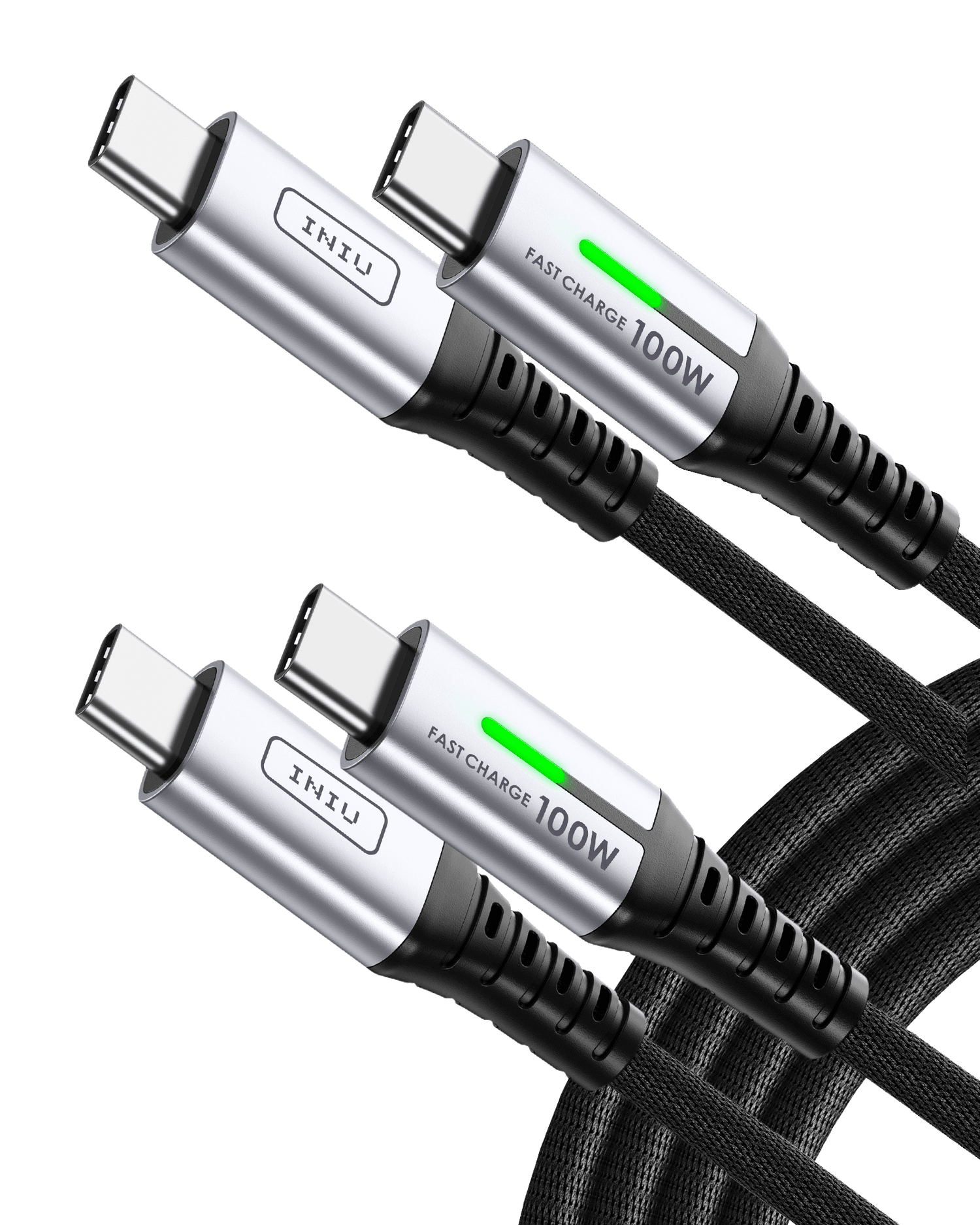
First-Time Camping? Don’t Forget To Bring Camping Power Bank
Planning your first camping trip? Learn what most beginners forget - including the importance of camping power banks and useful preparation tips for your trip.
An Unpleasant Camping Experience
I’ve been camping for years. Solo trips, family getaways, backcountry hikes...You name it. But there was one moment early in my camping journey that still sticks with me: the time I underestimated how much I’d need power during a solo trip.
It was supposed to be a peaceful 6-night solo trip. I had everything I thought I needed: a tent, sleeping bag, stove, even a weather radio. But I forgot to pack a camping power bank. On the third day, after hours of taking photos, navigating with GPS, and checking maps, my phone’s battery hit 12%.
That evening, I realized how much I relied on my phone. I needed it for navigation, weather updates, and to text my partner that I was safe. If something had gone wrong, I wouldn’t have had enough battery to call for help. Therefore, I had to consider ending my trip early to ensure that I could return safely. Since then, a power bank for camping is one of the first things I pack.
What Do First-Time Campers Always Forget?
Camping is one of the best ways to unplug, reconnect with nature, and hit reset. But new campers often overlook a few crucial details that can turn a relaxing trip into a challenging one. Here's what you don't want to forget.
Is Your Tent Suited for the Trip?
That $50 pop-up tent might look like a steal, but is it waterproof? Can it handle high winds? Is it breathable for summer heat or insulated for chilly fall nights?
Choosing the right tent means considering your destination, season, and length of stay. Always test your setup at home before you hit the trail. In addition, consider a tent that can accommodate more people than the number of travelers in your group. For example, purchase a 4-person tent for a trip for two people. You would not want to enjoy your trip in a cramped space. A good tent is your shelter from unpredictable weather and bugs and your best chance of a good night’s sleep.
Why Keeping Your Phone Alive Is A Must?
Sure, camping is about unplugging. But even in the woods, your phone plays a vital role:
- Emergency Communication: Calling 911, Rangers, or Forest Service in an emergency. Enable Emergency SOS features (like iPhone SOS or Android Emergency Location Service).
- Navigation: Using offline GPS apps (Gaia GPS, AllTrails, OnX) or digital maps.
- Weather Alerts: Critical for avoiding sudden storms, especially in mountains.
- Check-ins: Texting loved ones or using apps like Garmin inReach.
- Documentation: Capturing memories (photos/videos).
Many beginner campers underestimate how quickly phone batteries drain especially in cold weather or when used for photography and GPS. A portable power bank for camping ensures you can keep documenting your adventure and stay in touch with loved ones.
When recommending models, I look for ones with at least 20,000mAh and fast-charging capabilities. The INIU P64-E1, for example, is powerful enough for multi-day trips. With its 25000mAh large capacity and 140W high-power, you can always keep the battery fully charged.
However, if you just want to enjoy a relaxing weekend trip, a capacity of 10,000mAh is sufficient. Try to choose a compact power bank to reduce the weight of your luggage. The INIU P50-E1 will be your ideal companion, as it is as compact as AirPods and can fit into any pocket.

Choose the Right Light for the Night
It gets dark out there at night. Your phone’s flashlight might work in a pinch, but it drains your battery fast and offers limited visibility.
A strong handheld flashlight or emergency lantern is a much safer and more reliable solution. Headlamps leave your hands free, while LED lanterns can illuminate your whole tent or cooking area. Bonus if your lighting gear is rechargeable via your camper charger. Some camping power banks even include built-in LED lights, which are handy for late-night setup or reading before bed.
Safe Water is Non-Negotiable
That crystal-clear stream next to your campsite may look inviting, but it could be hiding dangerous pathogens like Giardia. In many camping areas, wildlife, upstream activity, or natural runoff can easily contaminate water sources even in remote forests or high-altitude trails. Drinking untreated water is one of the fastest ways to turn a great trip into a miserable one.
Yet water filtration or purification is often forgotten. Whether you're car camping or backpacking, always pack a reliable filter, purifier, or purification tablets. They're lightweight, easy to use, and can save you from serious health issues when you're far from medical help. Clean water should never be a gamble.
Planning to Use a GoPro or Drone?
Capturing your trip is half the fun—sunrises, hikes, campfire cooking. But cameras, GoPros, and drones consume a lot of power.
If you’re serious about vlogging or documenting your trip, bring a big power bank for camping with multiple USB outputs. Be sure to choose a power bank that supports the output power you need. For example, the INIU P64-E1 supports 140W fast charging. Check the power requirements of your device in advance and choose the appropriate charging device.
Also consider battery management: turn devices off between uses, and charge while you’re cooking or resting.
CRITICAL-DRONE RULES: Before flying a drone, always check FAA regulations and local park rules. Most U.S. National Parks, including Grand Canyon, Yellowstone, and Zion, completely ban drones due to noise, wildlife disturbance, and safety concerns. Violating these rules can lead to steep fines and legal consequences.

Are You Prepared to Camp Responsibly?
Enjoying nature means protecting it. Leave No Trace (LNT) is the gold standard for responsible camping, especially important in popular or fragile areas.
- Plan Ahead & Prepare: Know the rules, weather, and terrain. Always check for fire bans especially in the drought-prone West. If fires are allowed, only use designated fire rings and follow all local restrictions.
- Travel & Camp on Durable Surfaces: Stick to marked trails and established campsites to avoid damaging sensitive ecosystems.
- Dispose of Waste Properly: Pack it in, pack it out. This includes all trash, leftover food, and litter. Use catholes (6–8 inches deep, 200+ feet from water or trail) for human waste or pack it out where required.
- Minimize Campfire Impact: Use a camp stove whenever possible. If you build a fire, keep it small, burn only dead and downed wood, and put it completely out.
- Respect Wildlife: Watch from a distance. Never feed animals. Store food, trash, and scented items in bear-proof containers or lockers—mandatory in places like Yosemite or Glacier.
Responsible camping ensures these places stay beautiful for everyone and for your future self.
Which Camping Power Bank Is Right for You?
With so many options, finding the right power bank for camping depends on your trip length, the devices you're carrying, and your power needs.
Capacity: At least 10,000mAh for short trips; 20,000mAh+ for long trips
Durability: Rugged design, water-resistant casing, and dust protection. If your power bank comes with a dust bag, that would also be a good choice
Output Ports: Multiple USB-A, USB-C, and maybe even AC outputs
Pass-Through Charging: Allows simultaneous charging of devices
The INIU P64-E1 power bank fits these needs for most beginners. It’s not the only option, but it balances reliability, portability, and cost well. If you want more guidance on buying camping power bank, check out this article.
What Else Makes Camping Feel Effortless?
A successful camping trip is about thoughtful preparation. Beyond a camping power bank, these tips help everything go smoother:
- Download offline maps (Google Maps, Gaia GPS, etc.)
- Charge all devices fully the night before departure
- Bring a waterproof pouch to store electronics
- Use airplane mode or battery saver to extend phone life
- Keep electronics warm: Lithium batteries lose power rapidly in the cold. Store your phone and camping power bank inside your sleeping bag overnight during chilly nights, especially at high elevation or in fall/spring
This isn't the full list of tips but the tips I think the most useful. Prepare as much as you can for your trip before you leave. After that, embrace the beauty of being out there. The stillness of the forest, the sound of water at dawn, the sky lit up with stars. It’s not about capturing every second, but to enjoy nature to the fullest.
Final Thoughts: Are You the Camper Who’s Ready?
Camping isn’t about expensive gear. It’s about making sure your basics are covered: shelter, light, food, and yes, power.
If I had one piece of advice for new campers, it would be this: Don’t underestimate your power needs.
A camping power bank helps keep you safe, lets you document your trip, and ensures you're never truly cut off from the world. Whether you're gone for a night or a week, having a reliable power bank for camping is essential.
So pack wisely. Choose the best power bank for camping for your needs. And go enjoy nature with peace of mind and a fully charged battery. >>>Go with INIU



